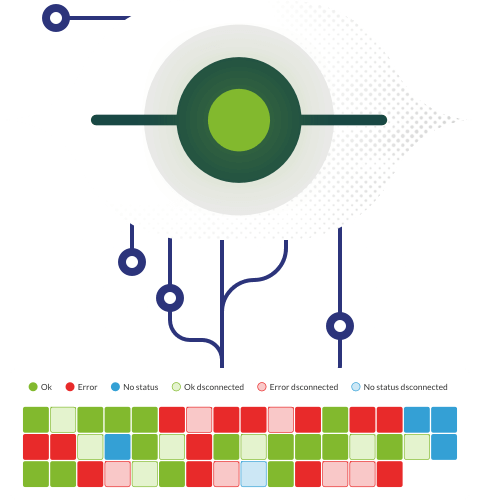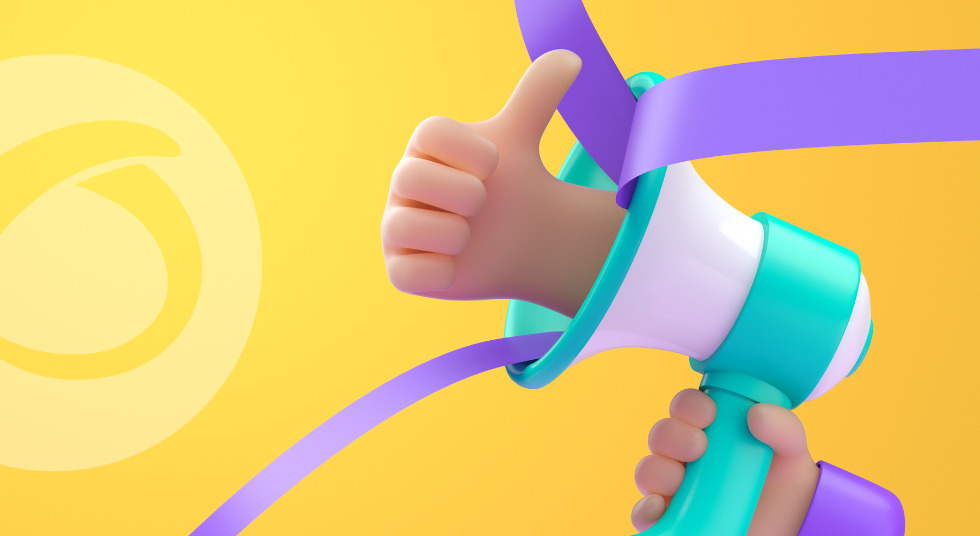Several studies have shown that nonverbal communication represents more than 50% of the message that you are trying to convey when speaking with someone.
If you work in customer service, we are pretty sure that you already know that this is an essential issue. When dealing with customers, it is quite different if you deal with them with a smile on your face or if you deal with them while lying on your chair with an annoying face. But there’s more, nonverbal communication is more than that and it can be much more subtle.
Sometimes it can be quite easy to figure out those aspects when it comes to nonverbal communication, but these aspects can be difficult to see sometimes and could easily slip away if we do not pay more attention. Let’s dig deeper into this subject and get to know some useful tips for improving nonverbal communication.
8 tips for improving non-verbal communication in customer service
You should care about your appearance
We don’t want you to look like George Clooney in an advertisement, but don’t take this personally we know that that would be quite hard. Dressing properly with clothes that are in good condition is quite essential and it will create a good image for your company in customer service when dealing with clients. A nice shower in the morning will also help.
The appearance of your company is quite important too
Just like hygiene and personal appearance, the appearance of the place where you will be dealing with people is quite important too. Clients shouldn’t see dust on the floor or dirty windows; they deserve a nice and clean place. You should also take care about tidiness, ventilation or excessive environmental noise. The better the place looks and the friendlier the environment around you, the better impression you will make.
Don’t make them beg…
Are you always too busy reading your book the first two hours of the morning that you don’t feel like talking to anybody? If you are a client who is waiting to talk to someone from the company it can be much more bearable when we see that the person we are waiting for is busy, but we can get easily annoyed if we see that this person is dealing with issues that have nothing to do with work. Don’t take the patience of your clients for granted.
Eye contact is very important
Imagine that you go into a clothing store and the person who is there talks to you while tiding up the store and without looking at you in the eyes. How would you feel? We are pretty sure that you would feel quite annoyed, right? We, as humans, tend to look at each other in the eyes – or at least face-to-face when speaking. If you break this basic principle, then this will be a sign of indifference and bad manners. Not a good way to start a conversation…
Don’t forget to smile
We know that sometimes it is not easy to achieve this. Maybe you have already gone through a long workday. Or you may have some personal problems. Or you might have a cold. But, try it anyway. Take advantage of your empathy and find your best smile. Maybe that person you are dealing with, is not having a great day but your kind and positive attitude might make his day better.
Maintain good posture
This is another basic principle, but it is not always easy to achieve this. A long day of work can be tiring, and if you are not used to maintaining good posture, it may not be easy for you to maintain it for hours. Maintaining good posture – a straight back and shoulders, for example – will create a good image for your clients, and it will also help you avoid problems, such as back pain. There you go, another reason to maintain good posture.
Don’t ever leave your client
Does your client want you to go with him around your store? What are you saying? Are you actually saying that your favourite show is on TV right now so you cannot leave your chair? Nope, don’t do that, and don’t be lazy, get up and let your clients know where a product is by walking around the store with them until they have found whatever they were looking for.
Learn to control your gestures
It’s good to move with elegance
But don’t make gestures with the arms, or move abruptly.
Nod from time to time as a sign that you are listening.
But don’t look away continuously to see what other clients or co-workers are doing.
These are just some examples. Most people know, by using the inner intuition, the kind of gestures that may or may not please others. But if this is hard for you then, look closely at the others. Look at how other people act and how others react to their gestures. Think about what you like and what bothers you if you were a client. Keep this in mind, and act accordingly.
These are just some basic ideas to improve nonverbal communication in customer service. Did you like these? Anyway, thank you very much for reading our article!
Of course, you know that, although nonverbal communication is an important factor, customer service is much more than nonverbal communication.
If you want to carry out your task without losing your mind, you will probably need to have the right instruments to help you do this properly. Lucky for you we can help you with that; there are now technological tools, such as helpdesk software, that can help you.
One of these is Pandora ITSM. Pandora ITSM has an incident management system based on tickets that can help you improve the customer service of your company or organization, among other features (such as an inventory or a project management system),
Do you want to find out what the Pandora ITSM help desk software can do for you? Click here: https://pandorafms.com/en/itsm/help-desk-software/
Or you can ask us any question you might have about Pandora ITSM. You can do this in the contact form that can be found at the following address: https://pandorafms.com/en/contact/
The Pandora ITSM team will be happy to answer all your questions!
Pandora FMS’s editorial team is made up of a group of writers and IT professionals with one thing in common: their passion for computer system monitoring. Pandora FMS’s editorial team is made up of a group of writers and IT professionals with one thing in common: their passion for computer system monitoring.

















